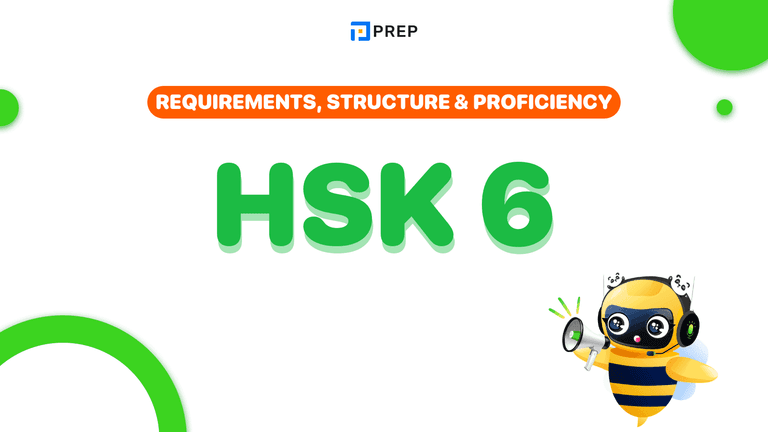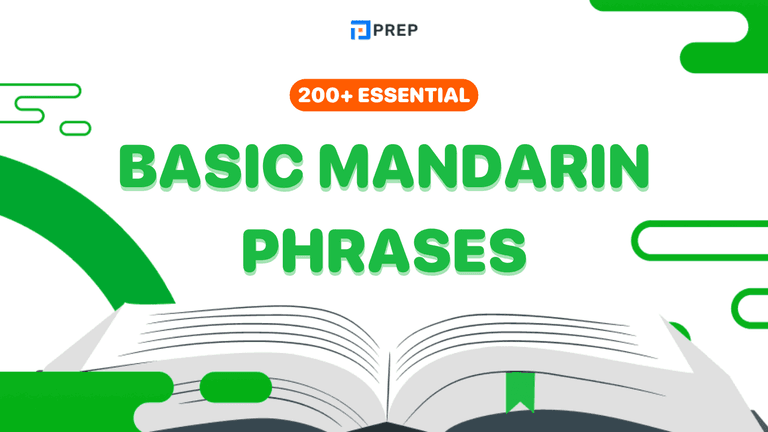Detailed instructions on how to write & read decimal numbers in English
Decimal numbers in English have a rather simple reading method, however, you also need to remember the reading rules to be as accurate as possible. Learning how to say decimal numbers in English correctly is essential for effective communication in academic, professional, and everyday contexts. Below are the comprehensive ways to read decimal numbers that PREP has summarized. Please save and practice with exercises to master reading decimals!

I. What are Decimal Numbers in English?
Decimal numbers in English include finite decimal numbers and infinite decimal numbers. In infinite decimal numbers in English there are two types, recurring decimals (with repeating number groups) and non-recurring decimals (with numbers, number groups that do not repeat).
Decimal numbers in English include the integer part and the decimal part, separated by a decimal point. The integer part is before the decimal point and the decimal part is after the decimal point. For example:
3.7: between 3 and 7 is a "." (decimal point), in which the integer is 3 and the decimal is 7.
-
3.5 is a finite decimal numbers in English.
-
3.5656... is a recurring infinite decimal numbers in English.
-
3.6789... is a non-recurring infinite decimal numbers in English.

Decimal numbers in English frequently appear in graphs, charts, and statistics in Writing Task 1 or topics related to mathematics in IELTS Speaking such as currency, mathematical concepts, and quantifiable objects. In the process of learning how to do IELTS Writing Task 1 and Speaking, it's crucial to comprehensively grasp how to say decimal numbers and other number forms, hence a better grasp of lectures, particularly those delivered by foreign instructors as well as application of these skills in tests.
In addition, decimal numbers in English are employed in prices, test scores, then we need to grasp how to say decimal numbers in English properly.
II. Types of Decimals: A Simple Overview
Understanding decimal numbers in English types helps you recognize patterns and choose appropriate methods for calculations and communication.
|
Type |
Characteristics |
Examples |
Common Uses |
|
Finite decimal number |
Ends after finite decimal places |
0.25, 0.5, 0.125 |
Money, measurements, everyday calculations |
|
Recurring decimal number |
Digit pattern repeats infinitely |
0.333..., 0.666..., 0.142857... |
Fractions like 1/3, mathematical calculations |
|
Non-recurring decimal number |
Continues infinitely without pattern |
π (3.14159...), √2 (1.41421...) |
Advanced math, engineering, scientific research |
Finite decimal numbers in English provide exact values perfect for practical applications like pricing and basic measurements. Recurring decimal numbers in English often result from simple fraction divisions, while non-recurring decimal numbers in English appear in advanced mathematical contexts requiring approximation for practical use.
III. A Comprehensive Way to Read Decimal Numbers in English
Here's a comprehensive summary outlining the various methods for reading decimals and writing decimal numbers in English: common reading method, reading method for monetary amount, and reading method in special cases.

1. Common Reading and Writing Methods for Finite Decimal Numbers
The reading decimals method is quite simple as follows:
Integer part + point + decimal part.
|
Part |
How to read decimal numbers |
Example |
|
Integer part |
The reading is the same as that of cardinal numbers. |
|
|
Decimal part |
Method 1: Read like reading cardinal numbers and read digit by digit (Similar to reading denominators of fractions with two or more digits). |
|
|
Method 2: For larger decimal numbers in English, we apply both standard decimal reading with reading large cardinal numbers by their place value (tens, hundreds, thousands, millions, etc). It is vital to identify the place value of the last digit:
Note: Always pronounce “ths” in the decimal part→ This is the formal reading decimals commonly employed in Mathematics. |
|
2. Reading and Writing Method for Monetary Amount
The how to say decimal numbers method for monetary amount in English is as followed:
Integer + currency unit 1 + and + decimal part + currency 2
In which:
-
Currency unit 1: dollar, pound, euro.
-
Currency unit 2 (smaller than unit 1): cent, pence.
Currency unit conversion:
-
1 dollar = 100 cents.
-
1 euro = 100 cents.
-
1 pound = 100 pences.
For example:
-
$16.81 ➡ Sixteen dollars and eighty-one cents.
-
$50.79 ➡ fifty dollars and seventy-nine cents.
3. Reading and Writing Method in Special Cases (Infinite Decimal Numbers and Negative Numbers)
3.1. Infinite Decimal Numbers
There are two types of infinite decimal numbers in English, recurring decimals (with repeating digits) and non-recurring decimals (with non-repeating digits). Specific reading decimals methods are as follows:
|
Decimal type |
Reading method |
Example |
|
Infinite recurring decimal |
Add "recurring" after reading the repeating part; or adding "(and) so on" after the three dots. |
|
|
Infinite non-recurring decimal |
Add “(and) so on” after the three dots. |
|
3.2. Negative Decimal Numbers
For negative decimal numbers in English, add "negative" in front. For example:
-
– 0.45 is read as negative zero point four five.
-
– 1.56 is read as negative one point five six.
-
– 1.33333… is read as negative one point three recurring.
IV. Operations with Decimals: Adding, Subtracting, Multiplying & Dividing
Master decimal numbers in English operations using these straightforward methods that ensure accuracy in all your calculations.
1. Addition and Subtraction
Align decimal points vertically for precise results. This simple technique prevents errors and maintains mathematical accuracy when working with decimal numbers in English.
Steps for addition and subtraction:
-
Line up decimal points vertically
-
Add zeros to equalize decimal places (12.45 + 3.7 becomes 12.45 + 3.70)
-
Calculate from right to left
-
Keep decimal point in same position for answer
2. Multiplication
Count total decimal places in both numbers, then place the decimal point accordingly in your final answer when multiplying decimal numbers in English.
Multiplication process:
-
Multiply as whole numbers (ignore decimal points initially)
-
Count decimal places in both factors
-
Place decimal point to show same total decimal places
-
Example: 2.5 × 1.3 = 3.25 (one place + one place = two places)
3. Division
Move decimal points to create whole number division while maintaining accuracy with decimal numbers in English.
Division steps:
-
Move decimal point in divisor right until it becomes whole number
-
Move decimal point in dividend same number of places right
-
Divide as whole numbers
-
Example: 12.6 ÷ 2.1 becomes 126 ÷ 21 = 6
These systematic approaches ensure accuracy across all decimal numbers in English operations, building your confidence for complex calculations in professional and academic settings.
V. Exercises on How to Write and Read Decimal Numbers in English (with Answers)
Below are some exercises on how to say decimal numbers in English for you to refer and practice:

Exercise 1: Write the reading for the following decimal numbers in English:
-
0.56
-
3.678
-
4.7777…
-
1.1234…
-
1029.6
-
$0.5
-
£790.9
Exercise 2: Write the decimal numbers in English based on the reading
-
Two hundred and fifty-eight point five six.
-
Thirty-five point two six.
-
Zero point nine.
-
Zero point zero six/ point zero six.
-
One point seven recurring.
Keys:
|
Exercise 1 |
Exercise 2 |
|
|
Above is a complete guide to reading decimals that you should remember. Decimal numbers in English often come up in everyday conversations as well as work and study environments, so be sure to focus on pronouncing them correctly. If you're practicing English pronunciation for IELTS Speaking, check out PREP's IELTS exam preparation course right away to master how to say decimal numbers with confidence.

Hi I'm Chloe, and I am currently serving as an Product Content Administrator at Prep Education. With over five years of experience in independent online IELTS study and exam preparation, I am confident in my ability to support learners in achieving their highest possible scores.
Comment
Premium content
View allPersonalized roadmap
Most read












